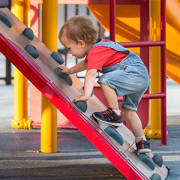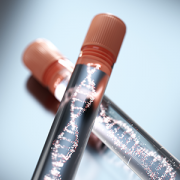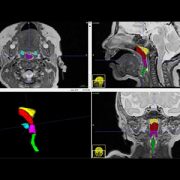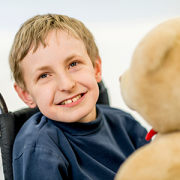Children’s perinatal hypoxia research lauded

Study authors Aaron Sathyanesan, Ph.D., Joseph Abbah, B.Pharm., Ph.D., Srikanya Kundu, Ph.D. and Vittorio Gallo, Ph.D.
Chronic sublethal hypoxia is associated with locomotor miscoordination and long-term cerebellar learning deficits in a clinically relevant model of neonatal brain injury, according to a study led by Children’s National Health System researchers published by Nature Communications. Using high-tech optical and physiological methods that allow researchers to turn neurons on and off and an advanced behavioral tool, the research team found that Purkinje cells fire significantly less often after injury due to perinatal hypoxia.
The research team leveraged a fully automated, computerized apparatus – an Erasmus Ladder – to test experimental models’ adaptive cerebellar locomotor learning skills, tracking their missteps as well as how long it took the models to learn the course.
The research project, led by Aaron Sathyanesan, Ph.D., a Children’s postdoctoral research fellow, was honored with a F1000 prime “very good rating.” The Children’s research team used both quantitative behavior tests and electrophysiological assays, “a valuable and objective platform for functional assessment of targeted therapeutics in neurological disorders,” according to the recommendation on a digital forum in which the world’s leading scientists and clinicians highlight the best articles published in the field.
Calling the Erasmus Ladder an “elegant” behavioral system, Richard Lu, Ph.D., and Kalen Berry write that the Children’s National Health System research team “revealed locomotor behavior and cerebellar learning deficits, and further utilized multielectrode recording/optogenetics approaches to define critical pathophysiological features, such as defects in Purkinje cell firing after neonatal brain injury.”
Lu, Beatrice C. Lampkin Endowed Chair in Cancer Epigenetics, and Berry, an associate faculty member in the Cancer and Blood Diseases Institute, both at Cincinnati Children’s, note that the Children’s results “suggest that GABA signaling may represent a potential therapeutic target for hypoxia-related neonatal brain injury that, if provided at the correct time during development post-injury, could offer lifelong improvements.”
In addition to Sathyanesan, Children’s co-authors include Co-Lead Author, Srikanya Kundu, Ph.D., and Joseph Abbah, both of Children’s Center for Neuroscience Research, and Vittorio Gallo, Ph.D., Children’s Chief Research Officer and the study’s senior author.
Research covered in this story was supported by the Intellectual and Developmental Disability Research Center under award number U54HD090257.











